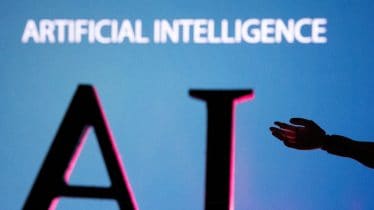Since the exceptional launch of ChatGPT in November 2022, there has been hardly any day when artificial intelligence (AI) hasn’t made a headline. The phenomenal money the companies making it are sitting over, its far-reaching uses, deepfakes, its cons, et al, are some of the things that are written about every single day. Despite that, the larger understanding and known utility are largely restricted to chatbots and image-generators. A lot of what goes behind the screen remains more like a black box.
Demystifying the tech and an explainer of sorts is Dream Machine: AI and the Real World by Indian graphic artist Appupen and France-based physics professor Laurent Daudet, who also runs a generative AI startup.The story revolves around Hugo Klein, CEO of an AI startup KLAI, who is in talks with REAL.E, “one of the biggest firms in the world”, for a lucrative deal under which a metaverse game is set to be developed to offer some kind of digital immortality. “Any similarity between me and Hugo is coincidental,” quipped Daudet at The Night of Ideas organised by Alliance Francaise de Delhi earlier this month, where he sat alongside Appupen to discuss their book.Although all excited at first over the deal, Hugo stumbles upon a roadblock, struggling to make a decision as the bigger and real intentions of REAL.E gradually unfold.
“What happened to the dream, Hugo? As students, we thought this would be the new dawn. We saw AI as a research field in itself—just theory without the obsession for applications. We thought of select applications for societal progress, not just profit,” Hugo is asked, highlighting the mad rush by new and old companies to get a share of the AI goldmine. “But when will AI be ready to solve our real problems? For healthcare or hunger?” asks Hugo’s wife in another instance, rightfully drawing the reality that despite the tall claims, it all boils down to profit.
In a little over 150 pages, Appupen and Daudet go on describing not only what’s happening on the AI scene, the developments, the supposed repercussions, the excitement, and anxiety, but also the very basics—such as how generative AI works, how does it predict the next word while responding to a user’s query.Although it’s a good attempt at educating users on the foundations of this glitzy tech, the tech, at times, can read academic and dry. However, here is where Appupen’s graphics go well, as they break the dullness of the text.
Coming to graphics, it’s a picture-dense novel with at least four to five panels per page. The protagonist Hugo looks eerily similar to Daudet, which works well giving the impression that the story is coming through the experiences of somebody who is at the centre of the activity. Also, it is high time that men of science directly speak to the public and educate them on the different aspects of their creation, and not leave the public and the policy-makers to deal with the repercussions as the creators sit on fame and money. The book, with Daudet playing a big role behind it, also fares well in this respect. A large portion of the book deals with the anxieties and the anticipated threats that AI brings with it, parts that can read either far-fetched, or something that everyone knows, or plain dystopia. Here, the Super Hugo comic strip, a comic within a comic that depicts Hugo’s state of mind, brings a well-thought-out break.
However, here is also where the problem lies—not the Super Hugo comic strip, but the supposed repercussions—as with the limited knowledge that one has on AI, it’s difficult to grasp what the writers are trying to portray. It comes off as both far-fetched, as well as something that everyone knows, at the same time.
For example, “I still know very little about AI. Hugo, my clients keep asking me about AI in branding. They want a little machine that can do all their strategies, ads, and marketing. It’s like they want me to replace myself,” says Hugo’s wife in one instance. Yes, any layman knows “very little about AI”, yet everyone believes it might someday ‘replace’ their jobs, which appears very flimsy and more based on fear than fact.
However, the instance where the words fail to make a mark, and the thought wins is in the last chapter— chapter 10—that has been written by AI. While the text is by ChatGPT, the illustrations are Stable Diffusion, a text-to-image generation tool. “The illustrations were generated by the Stable Diffusion model, refined on over 500 drawings taken from the first six chapters and captioned by the hand,” reads the disclaimer.
The results are quite commendable, yet, “AI doesn’t create, it reproduces,” as Appupen puts it.
However, beyond writing and drawing, can AI offer any goodness? “It’s neither good nor bad. It’s technology, just like a knife, which you can use to cut a vegetable or stab your neighbour,” quips Daudet.
Dream Machine: AI and the Real World
Appupen & Laurent Daudet Context
Pp 160, Rs 599
